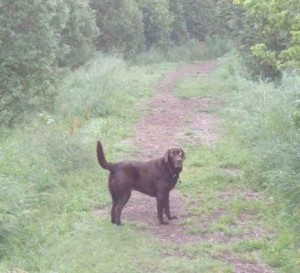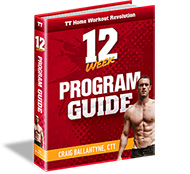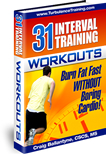Bodyweight Workout Tips
 Over the past few days Abel James and I have covered a few topics like “How to get lean in just a few minutes of exercise a week” to “The 12 rules I use to lead a healthy, successful life” on The Fat Burning Man Show.
Over the past few days Abel James and I have covered a few topics like “How to get lean in just a few minutes of exercise a week” to “The 12 rules I use to lead a healthy, successful life” on The Fat Burning Man Show.
If you haven’t had a chance check it out I would suggest starting part 3, “My Reasons For Going Gluten Free.”
To listen to the call click here
**************************
Abel: What about easy bodyweight workouts? People are always asking me about that. What do you recommend when people are just getting started, especially beginners who aren’t really used to being in the weight room or even doing any bodyweight stuff, how do they get started and start to make this change in their lives?
Craig: You can do an incredible workout lying on the ground with bodyweight exercises. Back when I was training people 35 hours a week I had a quite few clients who were beginners, overweight, and within 20 minutes of having them on the ground they were working up a sweat.
We would start with hip extensions. That’s where you’re on your back and you have your knees bent and you bridge up and you’re squeezing your glutes. We would do holds or we would do 15 to 20 repetitions.
Then we’d have them flip over. If somebody is overweight, just having them go up and down and flipping over, you’re moving your body so it’s exercise to a lot of people that are true beginners.
We’d go over to a plank. Then back over and we’d do a stability ball leg curl. Then back over for kneeling pushups. Then get them up and doing band pulls and wall slides to get good shoulder mobility. Then back down and doing one leg hip extensions. By the time we do a couple other exercises we’re through 20 minutes and they’ve been strengthened.
They’ve burned some calories, but they’ve been strengthened and they’re helping to build the muscles that will then allow them to do the standing exercises without any knee problems.
Then we work into something like wall squats or squatting with a stability ball between them and the wall for support. Then we work into some step-ups and split squats with balance. On and on and away we go.
There’s over 101 bodyweight exercise that we work up to more advanced one and we have a good time doing it, and we can throw these down anytime, anywhere.
Abel: Very cool. I love that. I do bodyweight stuff all the time, especially when traveling. Let’s contrast that with when Craig walks into a gym. What’s your goal now, what are you focusing on?
Craig: I still train the old meathead way that I used to train when I was younger, generally. I’m still pretty small, but I do train with the traditional squat bench, dead lift, pull-ups and step-ups. I did step-ups today with the barbell.
So I’m training that way predominately. Some cable exercises, but I’m not too far removed from the way that I used to train. There is a little bit more bodyweight exercise in there. Really it’s not too different from the way I trained when I was 16.
Craig: Absolutely. The basics that I learned then are the basics that I stick to now. When I’m in a hotel room and I have a flight at 7:00 in the morning and it’s a cross-country flight where I’ll get home at 7:00 at night but I still want to do something, I can beat myself down pretty hard in the room with bodyweight exercises only using that 20/10 system plus some of these additional moves.For example, here’s a really tough leg workout in four minutes. We do something that I call punisher squats.
You do about 15 repetitions of bodyweight squats and then you hold for 20 seconds. Then you hold the bottom position for 10 seconds. Then you do another 15 squats. You can repeat that for the full four minutes, just holding the bottom position.
We call that the punisher; 20 seconds of squats, 10 second hold, eight rounds. I actually have a YouTube video of me doing that and then doing some funky dance as I get out of the last one, because your quads are just so fatigued, so it’s a great video.
You can also do it where you do a minute of that and then you do what I call switch lunges on one leg for a full minute where you step forward with your right leg and then you step back with your right leg. You do one minute of that and then you switch over and do one minute stepping forward with the left leg and stepping back.
Then you go into one more minute of that 20/10 punisher style for two rounds. That’s four minutes and your legs are just going to go, “What the heck?” After that you can do two minutes of pushups using the 20/10 system.
What we’ve found is most people can only do about four rounds of 20/10 pushups where you do 20 seconds of pushups and 10 seconds of rest, because your upper body just fatigues a lot faster. And there’s six minutes. I do a little bit of warm up before that too, about 12 minutes of warm up and mobility stuff in my hotel room.
In 20 minutes that’s good fitness for the day, even though I’m going to go and sit on an airplane for eight hours.
Abel: I do a similar thing. If I’m not smoked by the end of those five minutes then I know that I did it wrong. It doesn’t matter how fit you are, you can definitely get there pretty quick just by going harder.
Craig: Absolutely.
Abel: If you’re doing pushups, for example, what do you recommend for folks, is it quick and explosive or is it kind of this slow burn technique?
Craig: I’m fine with two seconds down and one second up, or even one second down controlled is fine. I’m not really too worried about any specific thing there. As long as somebody has done some warm up stuff and a couple warm up rounds of maybe a couple pushups, then they can do the pushups relatively as fast as they’d like. Especially when you’re doing that 20 second thing, you just want to get a lot done.
If somebody wants to change things up and do 10 second lowering and a 10 second raise, they’re probably going to feel that more in the abdominals as well, more of a plank version of the exercise. That’s fine too. It’s all about variety, I’m not married to one specific repetition cadence.
Abel: Just getting out there and moving. 
Craig: Generally, yes.
Abel: I was married to a particular approach, I had a routine set, and I found that not only was I plateauing, I was getting bored. That’s one of the worst things that can happen when you’re training or adjusting your lifestyle in general, getting bored. That also tends to be associated with the times that you stop getting results, I’ve found.
Craig: Yes, absolutely. I think that there is also something to be said, kind of mystical I would say, that if you don’t enjoy what you’re doing then there seems to be less results from somebody who doesn’t enjoy what they’re doing. The people who hate going on the cardio machines, maybe they just don’t put in full effort on something if they don’t enjoy it, or maybe they just skip too many workouts. If they don’t enjoy it, they don’t get results. People who do enjoy their training tend to get better results.
That’s why I believe that you see people do something like Pilates where you wouldn’t think that it’s tough enough for somebody to get a great body, but a lot of people report it because they love it and they stick to it and they make sure that their nutrition and everything else goes along with it so they get great results. I really believe there is something there, but I can’t back it up with science.
Abel: That’s a good point. You talked about your mobility exercise as well. That’s something that the census says is unsexy, everyone wants to skip that part but it is really important. How do you work that in, what does it look like, and why should other people consider making that a part of the process?
Craig: I believe that it’s helped me. I had a low back injury a couple years ago and I had to do a lot of stretching and boring old static stretching, but also some additional core work, basic stuff like planks and side planks, and then some mobility, which is just moving your body in a whole bunch of different ways. I was doing foam rolling for awhile, but now I’m not even sure if I would recommend foam rolling too much.
Abel: Oh. Really?
Craig: Just because a lot of people I think are overdoing it. I think I was even overdoing it. When you do something like foam rolling and if it’s an off day or something, you’re really stressing that tissue. It’s almost like a treatment. You’re really applying more stress to it and it can cause even more inflammation. What I found was when I would go away on trips and not do any of that foam rolling stuff that I would come home and even though I thought I was doing less mobility that I wasn’t as sore as when I was doing that stuff every day.
Abel: Interesting.
Craig: So I’ve actually cut back quite a bit. Again, it’s like going and getting a hard massage every day. Most people feel sore the next day after a hard massage. If you’re doing that to yourself every day, you’re probably impeding the recovery process. So I’ve cut back on the foam rolling stuff.
Right now I don’t really have any injuries and I’m moving really great, so maybe if I had an injury maybe some properly spaced out foam rolling would help. That stuff is still kind of up in the air as to whether or not it really is necessary as people make it seem right now.
What I do is I have a dog, so I walk the dog first thing in the morning. That’s some mobility. Then I come home and that’s when I go into my training. So I’m warmed up by the dog walk and then I go into some general mobility for the upper back, wall slides, some static stretching for the upper body because if I don’t do static stretching for the upper body I do get tight pecs.
Just by doing regular stretching for that has helped me prevent that. I’m no longer as ropey as I used to be when I first started getting ARP treatment.
I do that stuff, then I work my way down to lower body stuff. I do some bodyweight squats, I do some single leg Romanian dead lifts, I do some leg swings, I do some lateral lunges. Not a lot, just six to 10 repetitions per movement. Then I also do plank and bird dog, maybe a hip bridge. Also, the W, Y, and T patterns for your upper back as well.
It used to be that I was doing this thing 35 minutes long. Now I just realized there’s quite a bit of diminishing return now that I don’t have anything to work through, so I’ve cut it back to about 15 minutes, even less if I’m in a real rush.
Abel: I was talking to one of my friends who one of his specialties is warm ups. He was trying to convince me to make it a bigger part of what I do and I just said, “Yeah, whatever.” But he says, “What if I could increase your performance by 20% just by doing this workout?” I thought, “Oh. Now I’ll do this.” You kind of have to reframe what a warm up means, both in terms of preventing injury as well as performance gains just because you’re moving better.
Craig: Absolutely. You get your nervous system ready to go forward as well. In that case you have to be careful you’re not doing too much, because you can get fatigued from it.
Abel: Right. What kind of dog do you have?
Craig: I have a Chocolate Lab.
Abel: Nice. I have a Yellow Lab. I think having a dog is one of the best lifestyle choices you can make, because it builds in automatically that one or two walks every day.
Craig: That’s true. People need to move more and that’s a simple way to do it. Unfortunately, you see a lot of fat dogs and you know they’re not getting the walks they need.
Abel: That’s definitely true. Basically my dog gives me absolutely no choice because she loses her mind if she doesn’t go outside at least two or three times every single day.We’re coming up on time here, Craig. Why don’t you tell folks out there where they can find you and what you’re working on now?
Craig: Sure. The best way to interact with me is on Facebook. We have a Facebook fan page for my training program at TurbulenceTrainingFanPage.com.
For people that are more interested in the personal development stuff we have a Facebook page for our Early to Rise business. You can find that at SuccessQ&A.com. I do these 15 minute Q&As there almost every morning.
My main program right now that I really want people to check out is something called HomeWorkoutRevolution.com, which is bodyweight workouts based on that 20/10 system and a few other ways of doing it. There are 51 follow-along videos that are really cool, they’re really short. We’re really high energy and we have a lot of fun doing it; it’s me and a couple of my Certified Turbulence Trainers.
I really think it’s one of the coolest things in fitness right now because there’s no equipment and you just get to workout anytime, anywhere, and have a blast with us. 
Abel: Awesome. This is totally content-packed. You’re welcome to come on the show anytime, Craig. This was awesome.
Craig: Thanks so much.
Craig Ballantyne, CTT
Certified Turbulence Trainer
